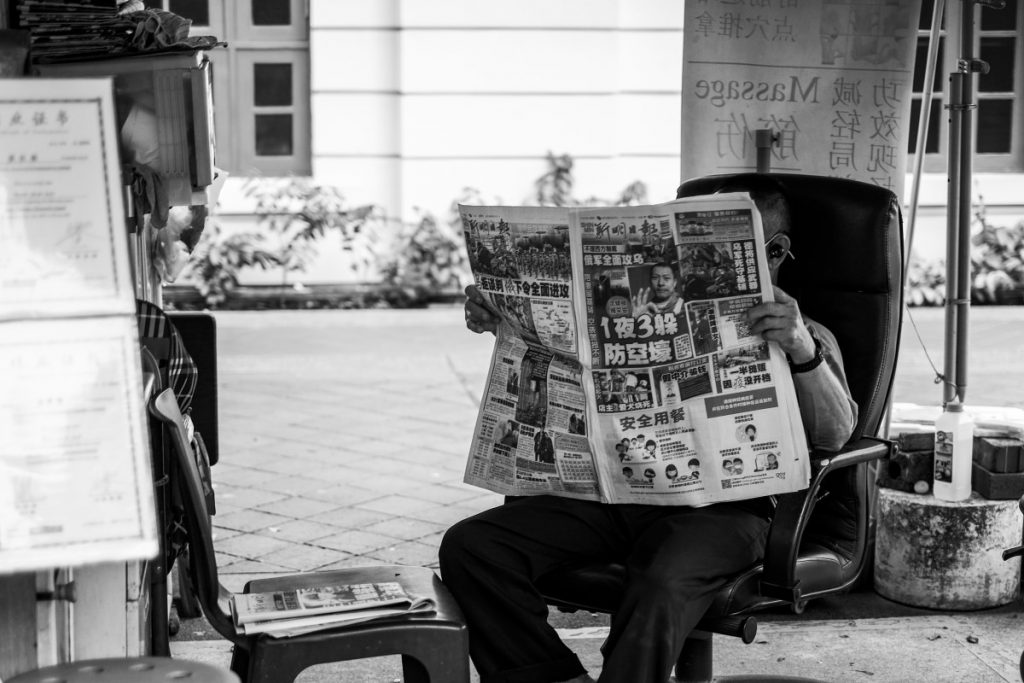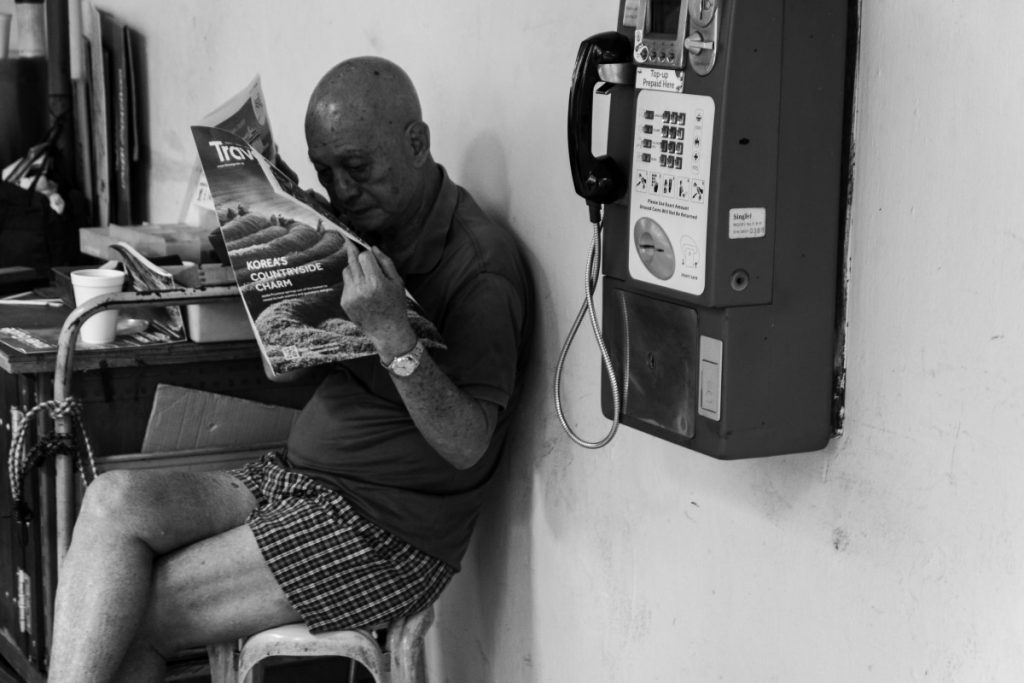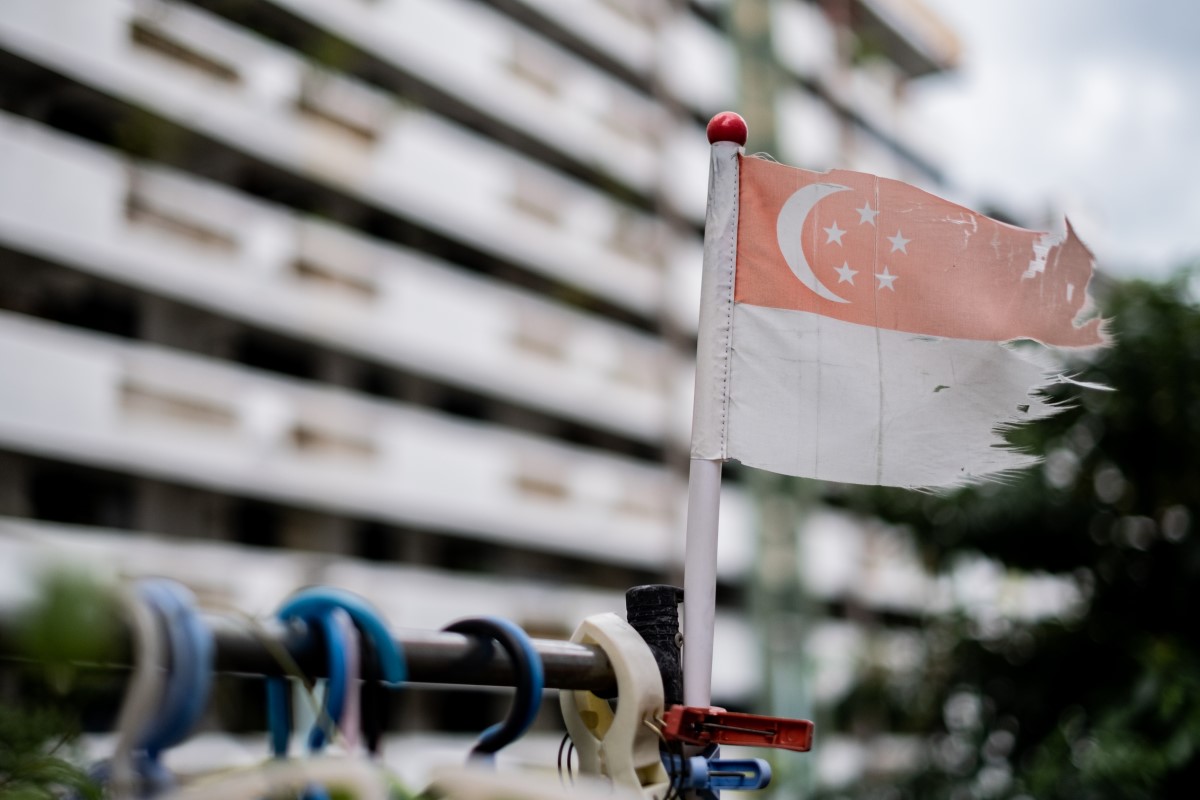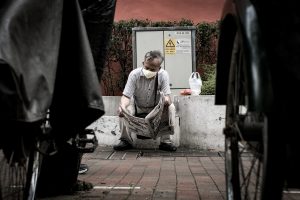Top image: Tey Liang Jin/Rice Media
Within days of publishing the story of a woman who claimed to have suffered a miscarriage after waiting four hours for medical attention in KKH’s A&E department, Wake Up Singapore (WUSG) posted a correction notice from the POFMA office issued by the Minister for Health on their social media platforms.
Their story arrived hot on the heels of a similar incident, where a woman lost her unborn child after waiting for medical attention in the A&E department for two hours at NUH. Naturally, another account of grave neglect sent shockwaves through the public, causing some outrage to be directed at KKH that questioned their quality of care.
Healthcare professionals have been under immense strain for some time now, but as of late they are overwhelmed to the point of burnout. Omicron’s surge at the end of 2021, that continued throughout 2022, inundated A&E departments with thousands of COVID positive patients who did not require hospitalisation, but kept arriving in droves.
Making a false allegation of misconduct and neglect during this time is twisting the knife further. In an apology post written before the correction notice, WUSG said they had “acted in good faith by taking steps to verify [the source’s] account” after KKH filed a police report upon looking into the evidence provided to the public by WUSG.
KKH identified a discrepancy in WUSG’s published evidence, followed it up internally, and found the whole story to be a hoax. The woman in question was seen by a doctor and did not suffer a miscarriage. Shortly after denying the claims made by WUSG in a public statement, the hospital filed a police report.
Still, WUSG did not give KKH the right of response before publishing these allegations.
Patterns of news consumption
WUSG has been described by themselves and their peers as a volunteer-run platform and it’s important to note that who, exactly, operates their social media is unclear. In the last two years, they have been publishing anonymously.
The public response to the KKH blunder was polarised. WUSG’s detractors have enjoyed the schadenfreude of the man-hunter becoming the man-hunted while conversely, a coalition of alternative voices issued a statement in solidarity with them, requesting a second chance for the anonymous volunteers at WUSG who have “fierce spirits [that] need to be handled with care.”
This polarity in perspectives brings out a larger conundrum for the media and the public. Our perception of who can be a journalist and what platforms can create news is in flux.
This is partly due to how and where we consume the news today. In a poll by Statistia, 83% of Singaporean respondents indicated that they get their news online, including through social media.
There’s also been much discussion on how to protect the public from encountering fake news, and we know that social media platforms are hardly a fertile ground for nuanced and fact-checked information.
Given that consumers receive most of their information online, it’s highly likely that the average Singaporean will encounter content published by the alternative media outlets, WUSG for example, that exist almost exclusively on social media.
Digital innovation has transformed the media landscape for both readers and makers of news. Legacy, state-owned publications (who have struggled to create profitable digital products) now publish alongside a crop of more nimble, and digitally fluent creators, like Wake Up Singapore, who gain prominence in part because of their willingness to approach issues that don’t get much traction elsewhere.

The high bar of news reporting
Reacting to current affairs and discussing taboo subjects has been a successful growth strategy for WUSG. They have often called their platform an “alternative news source”and they also referred to the work they publish as “reporting.”
Their readers, who presumably also interact with other news items from established outlets, may hold their content in the same regard as products from a larger newsroom, which have formal fact-checking and verification processes in place.
On the one hand, it’s understandable that their readers would invoke such standards of fact-checking and the expectation of good reporting from a proclaimed news source. In the comment section of their (now deleted) Instagram post apologising for their mistake, a former supporter characterised WUSG’s actions as “bad journalism that is not easily recovered with a sorry.”
On the other hand, it seems fair to say that mishaps like this are inevitable for alternative media outlets in Singapore. The general lack of resources in the industry means that independent journalists are ill-equipped to learn, perform, and hone the practice of journalism.
Not that it’s impossible for them to do good work, but doing good work consistently is a high bar to clear when there’s little funding to sustain an operation and thus, no incentive for seasoned professionals to nurture budding talent.
So, we are left to wonder: Is it fair to hold the new players in the evolving alternative media space to journalistic standards in light of their many constraints? And further, after any mess up, what will it take for them to earn back some credibility?
WUSG’s rise to prominence
For the uninitiated, WUSG’s rise to prominence unfolded on Instagram and Facebook. In January 2020, the account had less than 30,000 followers on Instagram. Today, their audience on this platform has surpassed 150,000. Two events skyrocketed this sudden growth: the most recent General Election and the pandemic.
There was clearly an appetite for some unfiltered, anti-establishment evangelism during this time. Though WUSG had a website (it has been offline since shortly after their correction notice) with longer articles, most of their best known content is created for and on social media.
WUSG’s content certainly doesn’t read like CNA or The Straits Times. Part of their special sauce is their tone, which is often lurid and occasionally combative. They communicate in the pitch of the platform––captions are strongly worded and information is condensed into concise bullet points on just a few slides.
Here’s a sampling of WUSG’s voice: underneath an infographic casting doubts on the PAP during GE 2020, they wrote: “We may not be balanced (we never claimed to be), but our presence balances the playing field.”
Additionally, in an infographic with a picture of PM Lee Hsien Loong from November 2020, they wrote in red font and capital letters: “PAP LOVES CONTRADICTIONS” in response to a speech by PM Lee in which he said that LGBTQ+ people are “valued members of society.”
When scrolling through their posts from 2020, one won’t find many instances of original ‘reporting.’ It’s mostly screencaps of news articles published elsewhere (CNA, Bloomberg, ST and more) paired with fiery captions, memes about current events, and anonymous confessions from their audience.
That changed in the past year.
As the platform’s readership has grown, so has their scope. They’ve published longer form infographics (multiple slides of text, accompanied by opinion instead of just screen grabs with sassy captions or memes) and directed their followers to view articles on their website. To their credit, WUSG frequently devotes airtime to minority voices and issues that are limply discussed in public.
Topics they’ve covered include: abolishing the death penalty, the efforts to repeal section 377A, and various accounts of racism and sexism. A non-exhaustive list of WUSG’s “notable contributions to progressive movement building” was compiled by their peers in the alternative media space who penned the letter in solidarity following their correction notice.
Much of what’s listed here has the appearance of being executed by someone who is following journalistic processes—including sources, contextualising current events in modern history, making references et al.
The intended effect of these works seems to share a spirit with what journalists often do: broadening the public understanding of social issues and empowering readers with good information.

News source or what?
If it walks like a news source, and quacks like a news source, is it a news source? First, let’s consider WUSG’s self-determination. This was written on the “About” section of their website in February 2022, shortly before the domain went down.
“[WUSG] strives to be a trusted and accessible alternative news source. The role we intend to play in society is to write stories that matter, shine light on issues that matter, and amplify voices that matter. We do not flinch at the prospect of taking a stand on issues, as long as our positions are grounded on sound reasoning and a solid foundation. We aim not just to report news, but to shape views.”
In the same section, WUSG stated their intent to offer “full-time positions to suitable candidates later this year” and posted their business email business@wakeup.sg for anyone who “should wish to advertise or collaborate with us.”
After the KKH debacle, WUSG removed “alternative news source” from their instagram bio, and switched their business categorisation to read as “community” instead of “media/news company.”
An argument that is often made against WUSG’s potential credibility as an alternative source of news, is that their political leanings (left, anti-establishment) prevents them from delivering information that is truthful and/or objective.
It’s hard to say what exactly prompted this change of heart, though, as WUSG declined to be interviewed for this story.
Truth… in the eye of the beholder?
PN Balji, a veteran Singaporean journalist with decades of experience in mainstream media publications, rejects that there exists an attainable, objective truth to report on in the first place.
“There is no newspaper that can claim to report the truth. It’s impossible. How can you get it? Maybe only one person knows it and they don’t want to talk to you. So you build a story around the so-called truth, and try to give as balanced a view as possible, by offering the reader various shades of it.”
Furthermore, Balji is doubtful that there is a contemporary precedent of objective journalism in the local mainstream media, let alone a procedural objectivity that alternative publications can mimic in their own reporting.
“State media projects the government’s view. Is that the real view that society holds? It’s hard to know when there are few alternative voices.”
PJ Thum, historian and managing editor of New Naratif, expanded on the lack of objectivity in a media that is funded by the state from his perspective as an independent publisher.
“The authorities have learned to be circumspect and controlling of information. In my experience from talking to other [mainstream] media outlets, access is a spectrum. Some have more, but even so, it’s limited. Official sources just won’t talk to New Naratif at all.”
Hewing to objectivity as the barometer for good and bad news diminishes the credibility of every player in the media landscape. It becomes a feedback loop: state media is biassed towards the government, the alternative media is biassed against the government, all the players are harbouring an agenda et al.
Still, Thum is unequivocal that he does not consider WUSG to be a source of news: “We, the public, need to be more discerning. We can’t apply standards for paid professional journalists to an all-volunteer Instagram site. Nor can we blindly believe every source of online news. I think of WUSG as campaigners for greater transparency rather than as journalists.”
Balji is less definitive about WUSG’s categorisation: “The beauty of journalism is there’s no black-and-white answer to what it is or what it can be.”

The alternative perspective
Nur and Yulianna Frederika (who also works on the social media team at RICE), are the co-founders of Lepak Conversations, a community building and advocacy platform for issues that matter to Malay/Muslims in Singapore. Lepak Conversations signed the letter in solidarity with WUSG, along with 16 other activists, journalists, and grass-roots organising platforms.
As signatories on the letter in solidarity, Yulianna and Nur have expressed their belief in WUSG as an agent for positive change that deserves a chance to gain back some credibility. Though, in their view a second chance doesn’t necessarily mean a clean slate.
“[WUSG] established themselves as an alternative news source,” Yulianna said. “They should be held to journalistic standards because of this. However, as a reader, I’d practise discernment over their reporting as it quite clearly lacked journalistic integrity.”
Yulianna’s point about discernment is a relevant issue to categorising ‘real’ or ‘fake’ news. In a study by Edelman, only 18% of Singaporeans were found to have “good information hygiene.” Broadly speaking, Edelman’s assessment of good information hygiene hinges on whether a respondent spreads misinformation, verifies their sources, and avoids echo chambers.
As publishers themselves, Yulianna and Nur have experienced the pros and cons of breaking news and sharing information on social media. “Social media is a great platform to deliver and consume news because of its accessibility,” Yulianna said.
Nur concurred. “There’s more freedom in the content,” she said. “We can publish stuff that falls outside our OB [out of bounds] markers, and there is dialogic communication as opposed to the one-way communication of news from mainstream news sources.”
When asked to define Lepak Conversations, Yulianna and Nur had slightly differing opinions on how their platform and content can be viewed. “I think it’s appropriate to view us as a source of information,” Yulianna explained. “But I would not label us as journalists. That requires a higher level of expertise and resources.”
Nur’s conception of what they do is more porous and perhaps reflective of how the old lines of demarcation are often blurred by new technologies. “Now, I’d say that the term ‘journalist’ encompasses a wider group of people,” she explained. “I’m sure there is some overlap between what activists do and what good journalists and reporters do.”
In reference to WUSG, Nur and Yulianna agree that transparency is the way forward, should they want to continue creating news.
“Being open and transparent about the potential gaps in their system and the limits they face is sufficient in cautioning the public that while they have done their due diligence, everything should be taken with a grain of salt.”
To their credit, WUSG copped to the error quickly, detailing the fault in their process before they were issued a correction notice.
Regional solidarity and knowledge sharing
Central to any outlets that report news is the issue of funding and sustainability. The funding issue is complex and it plagues media players of all sizes and slants in and beyond our borders. It’s unlikely this will be reconciled in a timely manner.
Still, however, there could be a resource that we already have which is underutilised: knowledge sharing.
Journalists work in silos partly due to competitiveness. Scoops and sources are trade secrets and proprietary information. In the alternative media space, journalists are further siloed from their mainstream peers, given the unequal flow of top-down information. As stressed previously, not all newsrooms are created equal, and access can impact output.
Since there’s not much pie to share in the first place—when it comes to funding, market share, and audience reach—there’s a heightened sense of competition between the alternative media outlets. This instinct seems like a survival skill, but does this practice of suspicion and secrecy hinder the potential of the alternative media space at large?
In one respect, the segmented nature of the media ecosystem prevents the cultivation of new talent by gatekeeping knowledge, credibility, and access.
On the subject of gatekeeping, there’s plenty of that in our reticence to accept alternative media platforms that publish unconventionally, like WUSG, as members of the media.
New Naratif’s latest report on Media Freedom and Independence in South East Asia posits that the “conventional definition of the term [news] involves an element of gatekeeping, as developments in the media landscape, where the production of information is no longer monopolised by the few, have rendered these definitions insufficient.”
Accepting publications and reporters who exist beyond the traditional lines of demarcation as media workers (viewing them as colleagues, instead of adversaries or a passing trend) may foster more credibility for the alternative media scene, even beyond the social-only platforms like WUSG.
An example of how this can work, would be the inauguration of an informal coalition of independent journalists in Singapore.
Coalitions are a useful tool to share knowledge; and in Singapore, this would help establish common journalistic best-practices to avoid mishaps like WUSG’s brush with POFMA in the first place.
This knowledge exchange has a precedent in South East Asia. There are journalistic coalitions in Indonesia (AJI), Cambodia (CamboJA), the Philippines (PCIJ), and Malaysia (CIJ). In these groups, knowledge is shared through fellowships, capacity building workshops, and the mental support of a solidarity network.
When asked how to increase alternative media sustainability in Singapore, Thum suggested that a paradigm shift is necessary to view the local media as part of this wider regional tradition.
“Independent journalists in Singapore will have a lot to benefit from sharing with their regional peers. In South East Asia, the media has many problems in common.”

Not all newsrooms are created equal
WUSG’s cardinal mistake was obvious to Balji. “You can never, ever trust only one source.”
This is a lesson learned by doing. A benefit of reporting for a well-funded operation is that there are multiple checkpoints between a story and the public. That’s a procedural advantage that legacy publications have over the leaner and scrappier alternative outlets.
Of course, there are varying degrees of leanness. It can be presumed that WUSG’s operation, though quite large in its reach, is constrained by its nature as a volunteer-run platform that does not raise money.
In Thum’s view, the lack of funding is the greatest obstacle for a healthy alternative media with editorial independence. “Media sustainability is the greatest challenge to media freedom,” he said.
But, where can that funding come from? Receiving foreign monies for any publication that deals with political issues is a no-go that is enshrined into law. Locally, convincing consumers to pay for their news access hasn’t exactly caught on. The subscription model has not yet sustained even our largest media operations, such as The Straits Times, without government intervention.
It would be hard to make a subscription model work as the sole income for an alternative media publication. Balji suggests this reluctance—to consider editorial independence as a service worth paying for—may have a cultural element.
“We are not a society that challenges views,” he said. “We just don’t have that culture.”







